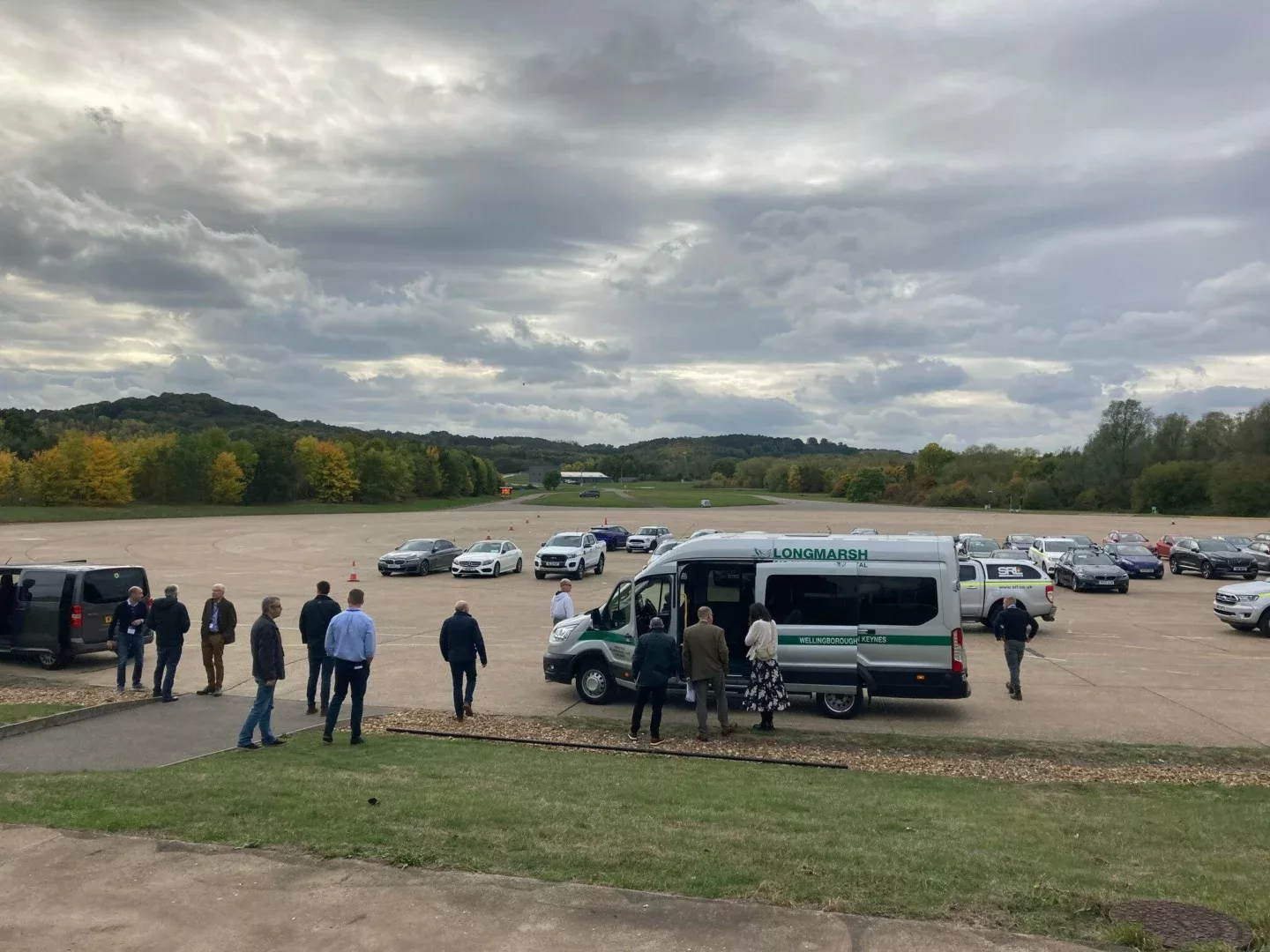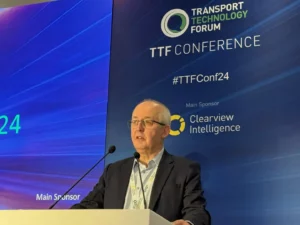The Transport Technology Forum’s Connected Vehicle working group has shown off a range of connected vehicle services that can make roads cleaner, safer and more efficient.
The SPATULA event at the UTAC Millbrook Proving Ground in Bedfordshire featured demonstrations of existing connected solutions that could be used on the highway.
These consisted of services that used existing cellular communications to deliver in-vehicle signage, safety solutions, real-time traffic information and GLOSA for signal timing. All the solutions utilise mobile phone technologies, therefore do not require roadside beacons to work.
Delegates were taken on tours of the test track where they witnessed various services integrated together by SRL, KL Systems and HRS showing how temporary and fixed traffic signals and road signs can be relayed into vehicles without any human intervention. They also saw how connectivity can be used for managing traffic flow safely at roadworks. This not only demonstrated the various services in operation abut also showed them working together through a single multi-function display in the vehicle.
The start-up company VESOS, which has been created to maximise the value of eCall, simulated a crashed vehicle and showed using the same KL Systems service how the fire service could receive detailed information about the stricken vehicle, including its location, vehicle make and model.
Meanwhile, Standby RSG showed how its service, using the FleetMotus platform, links to KL Systems to send in-vehicle warnings to drivers when an emergency vehicle is approaching, meaning improved driver response rates to blue light events.
Vodafone and Commsignia demonstrated a further emergency vehicle warning system, which warns road users of their presence, even if they cannot see their lights or hear a siren. They also demonstrated automated vulnerable road user warnings which use connected devices to warn other drivers of the presence of VRUs even if they cannot be seen due to obstructions or blind bends, smart junction detection, dynamic speed limit management technology and road user generated data.
Eloy detailed its connected vehicle solution, supported by the Rees Jeffreys Road Fund, which automatically warns drivers on narrow roads of another vehicle coming in the other direction. This solution includes warnings to stop at a safe place, making roads safer and reducing the need for one vehicle to have to reverse to find a passing place.
“Everyone always brackets connected and automated vehicle technology together, and for years I have been saying the two are related but not the same,” commented SPATULA chair Andy Graham. “These demonstrations here at UTAC prove that the benefits of connected vehicles aren’t something far into the distance, but some solutions are here and now. If roads authorities and niche users really embraced them, we could have safer, more efficient roads.”
(Picture – TTF)



























